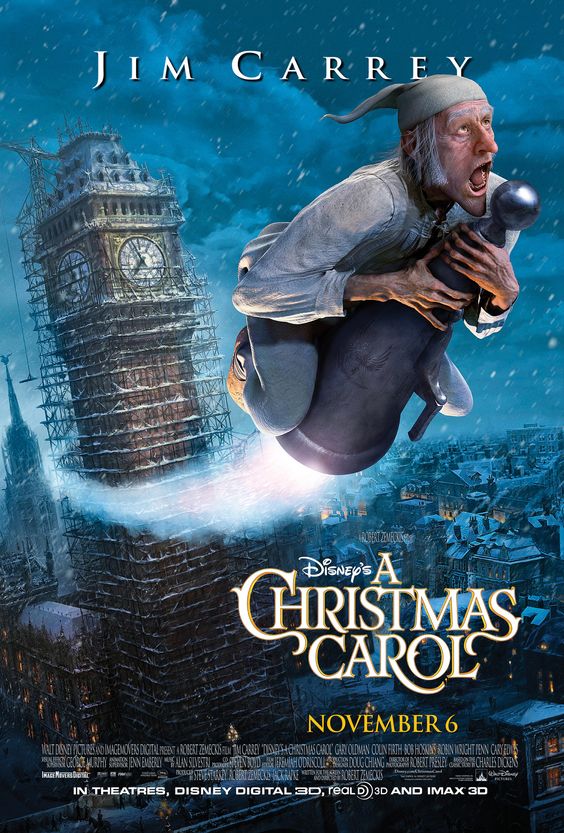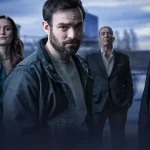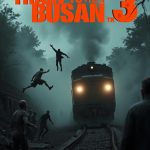“A Christmas Carol” (2009): A Modern, Animated Retelling of Dickens’ Classic Tale

Directed by Robert Zemeckis, A Christmas Carol (2009) is a visually striking, motion-capture animated adaptation of Charles Dickens’ beloved novella. Featuring Jim Carrey in a multifaceted performance as Ebenezer Scrooge and the three Christmas spirits, this film brings a fresh, technologically innovative take on the classic story while retaining the essence of its timeless moral.
The Story and Characters
At the heart of A Christmas Carol is Ebenezer Scrooge, an elderly miser whose disdain for Christmas and cold-hearted nature define him. Living in isolation and greed, Scrooge dismisses any joy or generosity associated with the holiday season. On Christmas Eve, he’s visited by the ghost of his former business partner, Jacob Marley, portrayed in haunting, ghastly detail. Marley warns Scrooge that his life’s trajectory will lead to eternal suffering unless he heeds the guidance of three spirits: the Ghosts of Christmas Past, Present, and Yet to Come.
The Spirits’ Journeys
Each ghostly visit in A Christmas Carol is meticulously crafted to show Scrooge the consequences of his choices, taking him on a transformative journey through his past, present, and potential future.
- The Ghost of Christmas Past – This ethereal spirit guides Scrooge through pivotal moments in his life, including joyful memories from childhood and moments of lost love. These scenes reveal how Scrooge’s misfortunes and disappointments hardened his heart, particularly his relationship with Belle, a woman he loved but lost due to his obsession with wealth.
- The Ghost of Christmas Present – Scrooge is then transported to the present day, where he observes the warmth and love shared by families celebrating Christmas, especially the humble Cratchit family. He sees the struggles and strength of Bob Cratchit, his underpaid clerk, and feels particular sympathy for Tiny Tim, the Cratchits’ ill son, whose spirit shines with hope and joy despite adversity.
- The Ghost of Christmas Yet to Come – In a dark and haunting climax, Scrooge faces the grim consequences of his life’s choices. The ghost reveals a lonely death for Scrooge, unlamented by others, and shows Tiny Tim’s tragic fate if Scrooge remains indifferent to those around him. This vision of the future ultimately compels Scrooge to confront the emptiness of his life and the urgency of change.
Scrooge’s Transformation
After the visitations, Scrooge awakens on Christmas morning filled with newfound joy, gratitude, and a determination to live generously. He embodies the spirit of Christmas, offering kindness and support to others, especially the Cratchits, ensuring a brighter future for Tiny Tim and fostering goodwill in his community.
Technical Innovation and Style
Directed by Zemeckis, known for pioneering CGI in films like The Polar Express, A Christmas Carol employs advanced motion-capture animation that brings an uncanny realism to its characters and settings. The film’s dark yet vibrant aesthetic enhances the supernatural elements of the story, immersing audiences in the 19th-century Victorian landscape with fantastical yet grounded visuals. Jim Carrey’s performance is a standout, as he portrays Scrooge through various ages and the three spirits with distinct voices and physicality, adding depth to his character’s transformative journey.
Themes and Legacy
The story’s themes—generosity, redemption, and compassion—are powerfully conveyed, reminding viewers of the importance of kindness and empathy. By blending Dickens’ enduring message with innovative animation, A Christmas Carol (2009) appeals to both fans of the classic tale and new audiences. The film highlights how the spirit of Christmas transcends time, offering a modern take on a story that has remained relevant for over a century.











